Search
All results
(707)
MediaInfos
(190)
Biographies
(2)
Images
(14)
Videos
(7)
Publications
(22)
Technical Details
(238)
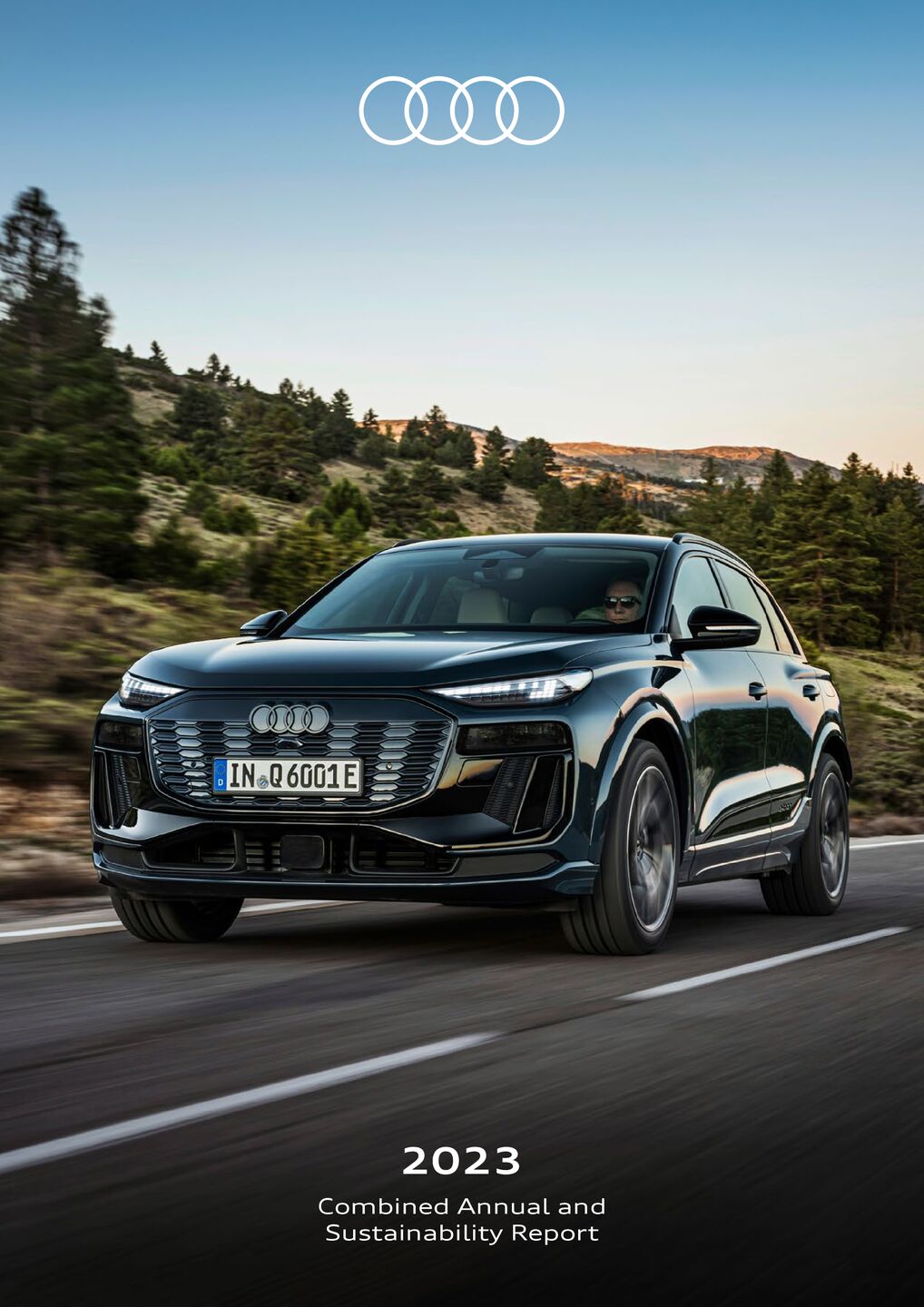 2023: Combined Annual and Sustainability Report
2023: Combined Annual and Sustainability Report
Thanks to the sophisticated thermal man‑ agement, the 800‑volt technology and a maximum DC charging power of 270 kW³ as standard, short charging stops are possible with the Audi Q6 e-tron family. For instance, sufficient additional charging for up to 255 kilometers more range can be achieved in a mere 10 minutes at a suitable charging terminal (High Power Charging – HPC). The state of charge (SOC) increases from 10 to 80 percent in around 21 minutes. Advanced recuperation is an important factor in increasing efficiency and therefore range. Around 95 percent of all everyday braking processes can be carried out using this. The Audi Q6 e-tron¹ recuperates at a rate of up to 220 kW in the process. ¹ Audi Q6 e-tron quattro: electric power consumption in kWh/100 km (combined): 19.6–17.0; CO₂ emissions in g/km (combined): 0; CO₂ class: A. ² Audi SQ6 e-tron: electric power consumption in kWh/100 km (com‑ bined): 18.4–17.5 (WLTP); CO₂ emissions in g/km (combined): 0; CO₂ class: A. ³ Battery charging time and power can vary depending on various factors such as ambient and battery temperature, use of other country-specific plugs, use of the preconditioning function (e.g., remote‑controlled air conditioning of the vehicle), power availability at the charging terminal, charge status and age of the battery. The charging power decreases as the charge status increases. Charging losses are included. New Audi Q in the midsize segment The new Audi Q6 e-tron offers customers added value in premium quality across numerous areas of technology. It sets standards in terms of performance, range, charging, driving dynamics and design. At the same time, it impresses with a holistic interior experience and many technical features in the areas of lighting technology, infotainment and digital services. All of this is possible thanks to the newly developed E³ and PPE architectures.
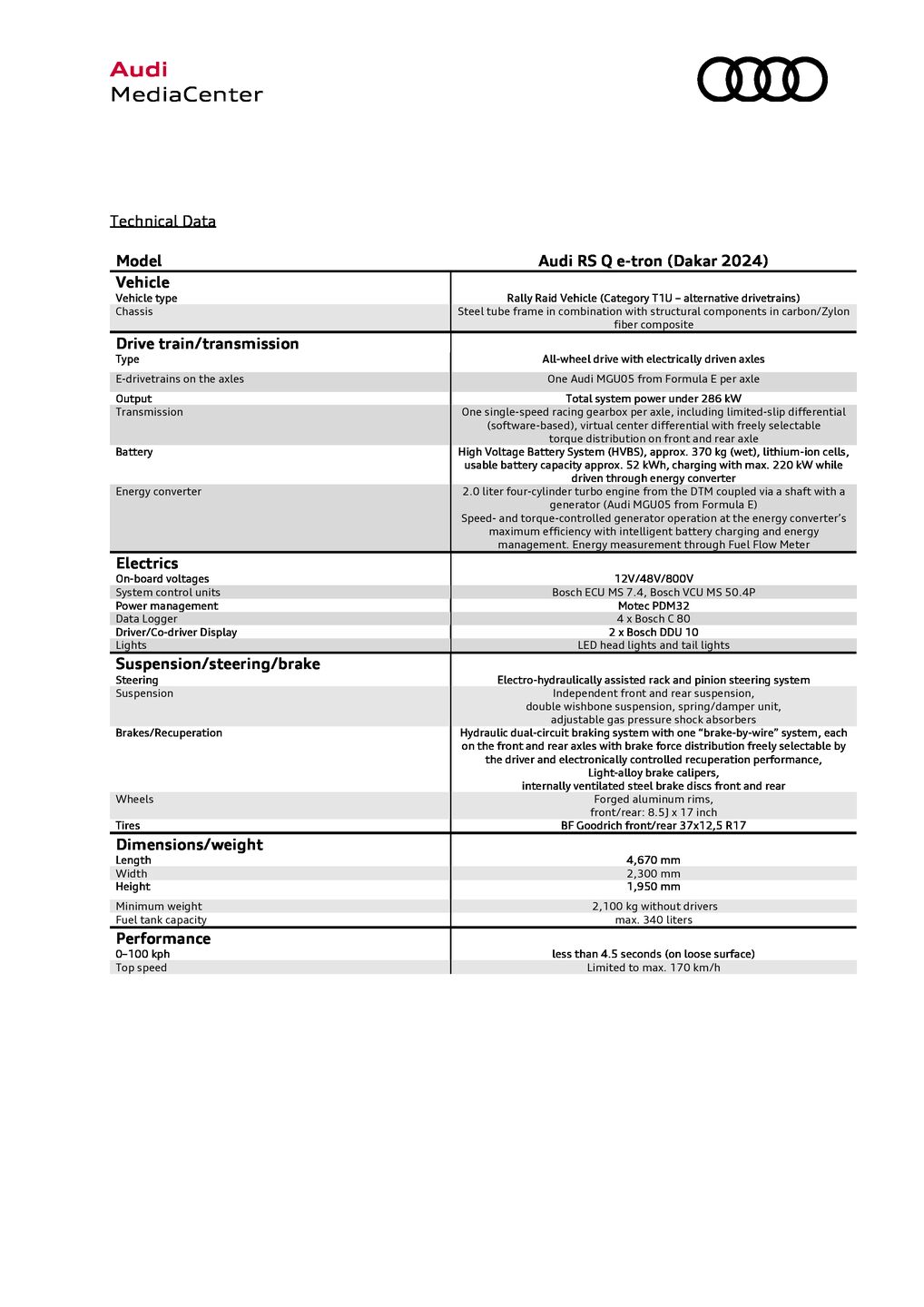 Technical Data: Audi RS Q e-tron (Dakar 2024)
Technical Data: Audi RS Q e-tron (Dakar 2024)
Audi MediaCenter Technical Data Model Audi RS Q e-tron (Dakar 2024) Vehicle Vehicle type Rally Raid Vehicle (Category T1U – alternative drivetrains) Chassis Steel tube frame in combination with structural components in carbon/Zylon fiber composite Drive train/transmission Type All-wheel drive with electrically driven axles E-drivetrains on the axles One Audi MGU05 from Formula E per axle Output Total system power under 286 kW Transmission One single-speed racing gearbox per axle, including limited-slip differential (software-based), virtual center differential with freely selectable torque distribution on front and rear axle Battery High Voltage Battery System (HVBS), approx. 370 kg (wet), lithium-ion cells, usable battery capacity approx. 52 kWh, charging with max. 220 kW while driven through energy converter Energy converter 2.0 liter four-cylinder turbo engine from the DTM coupled via a shaft with a generator (Audi MGU05 from Formula E) Speed- and torque-controlled generator operation at the energy converter’s maximum efficiency with intelligent battery charging and energy management.
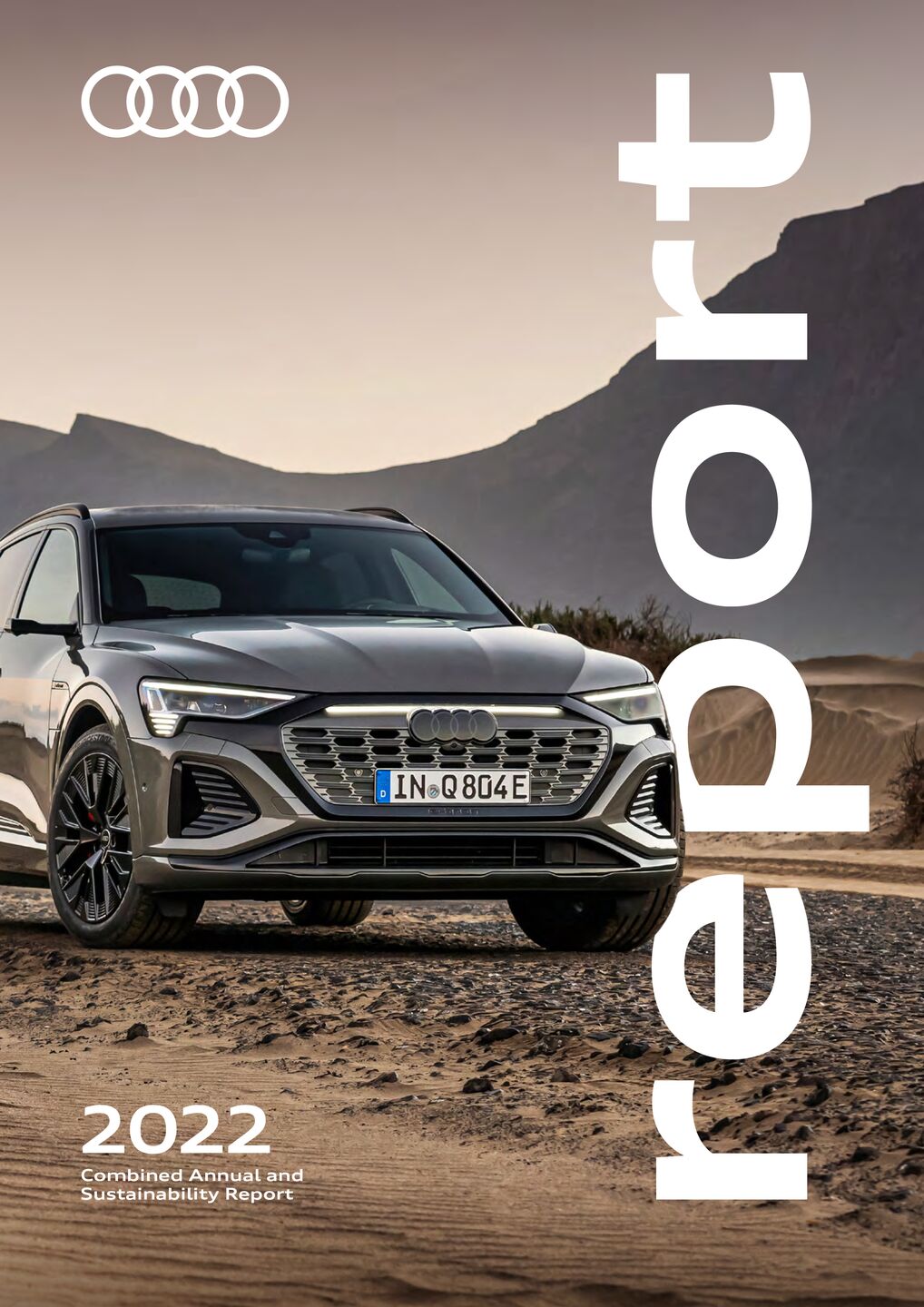 Audi Report 2022
Audi Report 2022
consumption (combined) in kWh/100 km: 21.6–19.6 (WLTP); CO₂ emissions (combined) in g/km: 0.* ² Audi RS e-tron GT: electric power consumption (combined) in kWh/100 km: 22.1–19.8 (WLTP); CO₂ emissions (combined) in g/km: 0.* * Information on electric power consumption and CO₂ emissions in ranges depends on the vehicle’s selected equipment.
 Anniversary Dates 2023
Anniversary Dates 2023
The turbocharged four-cylinder engines with an output of 150, 180 and 225 hp were followed in the TT quattro Sport by the 250 hp V6 engine and a fourcylinder engine with its power boosted to 240 hp. In 2005, when the second-generation successor model was already about to be launched, the power of the two “small” four-cylinder engines was increased to 163 and 190 hp. By mid-2006, over almost eight years of production 178,765 Audi TT Coupés had rolled off the production line. years 25 Audi Tradition 6 Anniversary Dates 2023 On 18 February 1993, as part of AUDI AG’s new strategic focus, the company established a fully owned subsidiary based in Győr, Hungary to outsource some of its production abroad for the first time in the company’s history. The factory, which initially only manufactured engines, started operating in October 1994. By 1996, the production capacity had doubled to 1,500 units a day; in 1998 Audi Hungaria joined forces with the factory in Ingolstadt to assemble the Audi TT. The decision was made in 2010 to expand the Győr factory into a site offering full automotive production. In 2021, 11,983 employees produced over 170,000 automobiles and more than 1.6 million diesel, petrol and electronic powertrains there. Foundation of Audi Hungaria Motor Kft.30 years Audi Tradition 7 Anniversary Dates 2023 In October 1988, AUDI AG unveiled the Audi V8, which represented the company’s first foray into the premium segment. The eight-cylinder Audi model was initially powered by a 184 kW (250 hp) 3.6 litre lightalloy engine and impressed with an array of innovative engineering features such as permanent all-wheel drive, four-valve technology and a four-speed, electronically controlled automatic gearbox. More than half a century earlier, the Auto Union brand Horch had previously offered a V8-cylinder engine. The decision was made at Horch in 1932 to develop a “small” V8 Horch that could be offered to discerning premium buyers.
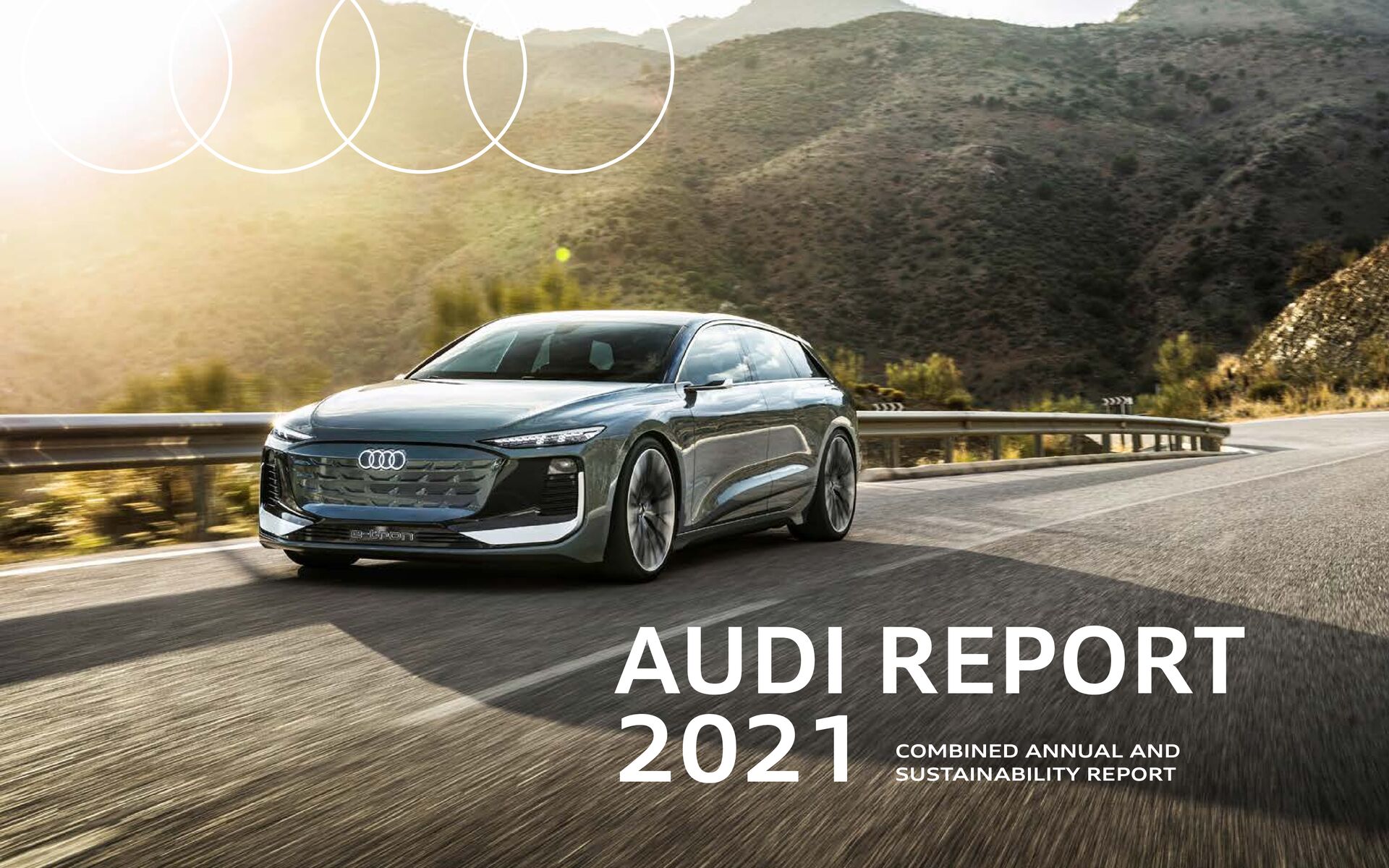 Audi Report 2021
Audi Report 2021
Information on fuel consumption and CO 2 emissions in ranges depends on the selected wheel/tire combination. ⁵ The two models Audi Q5 e-tron and Audi A7 L are manufactured by the associated company SAIC Volkswagen Automotive Co., Ltd., Shanghai (China), and available and sold exclusively in China. ⁶ The model Audi Q2 L e-tron is manufactured by the associated company FAW- Volkswagen Automotive Co., Ltd., Changchun (China), and available and sold exclusively in China. ⁷ Audi e-tron GT quattro: combined electric power consumption in kWh/100 km: 19.6– 18.8 (NEDC), 21.8–19.9 (WLTP); combined CO₂ emissions in g/km: 0. Information on electric power consumption and CO₂ emissions in ranges depends on the vehicle’s selected equipment. Audi RS e-tron GT: combined electric power consumption in kWh/100 km: 20.2–19.3 (NEDC), 22.6–20.6 (WLTP); combined CO₂ emissions in g/km: 0. Information on electric power consumption and CO₂ emissions in ranges depends on the vehicle’s selected equipment. 2021 2020 ∆ in % Audi Q2 L e-tron⁶ 3,092 3,768 –17.9 Audi Q4 e-tron 27,696 261 X Audi Q5 e-tron⁵ 17 – X Audi e-tron 44,972 42,901 4.8 Audi e-tron GT⁷ 9,602 244 X Total fully electric model series (BEV) 85,379 47,174 81.0 Plug-in hybrid models (PHEV) 83,670 64,845 29.0 Total electrified model series (BEV + PHEV) 169,049 112,019 50.9 Production of electrified model series, Audi brand The plant in San José Chiapa in Mexico built 137,634 (124,298) vehicles, an increase of 10.7 percent. 34,860 units of the new Audi Q5 Sportback⁴ were produced here in the year under review. In China, FAW-Volkswagen built 605,933 (671,970) vehicles in 2021. Following the production start of the Audi Q5 e-tron and Audi A7 L⁵ models in Anting (China), the associated company SAIC Volkswagen produced 1,075 Audi vehicles locally for the first time.
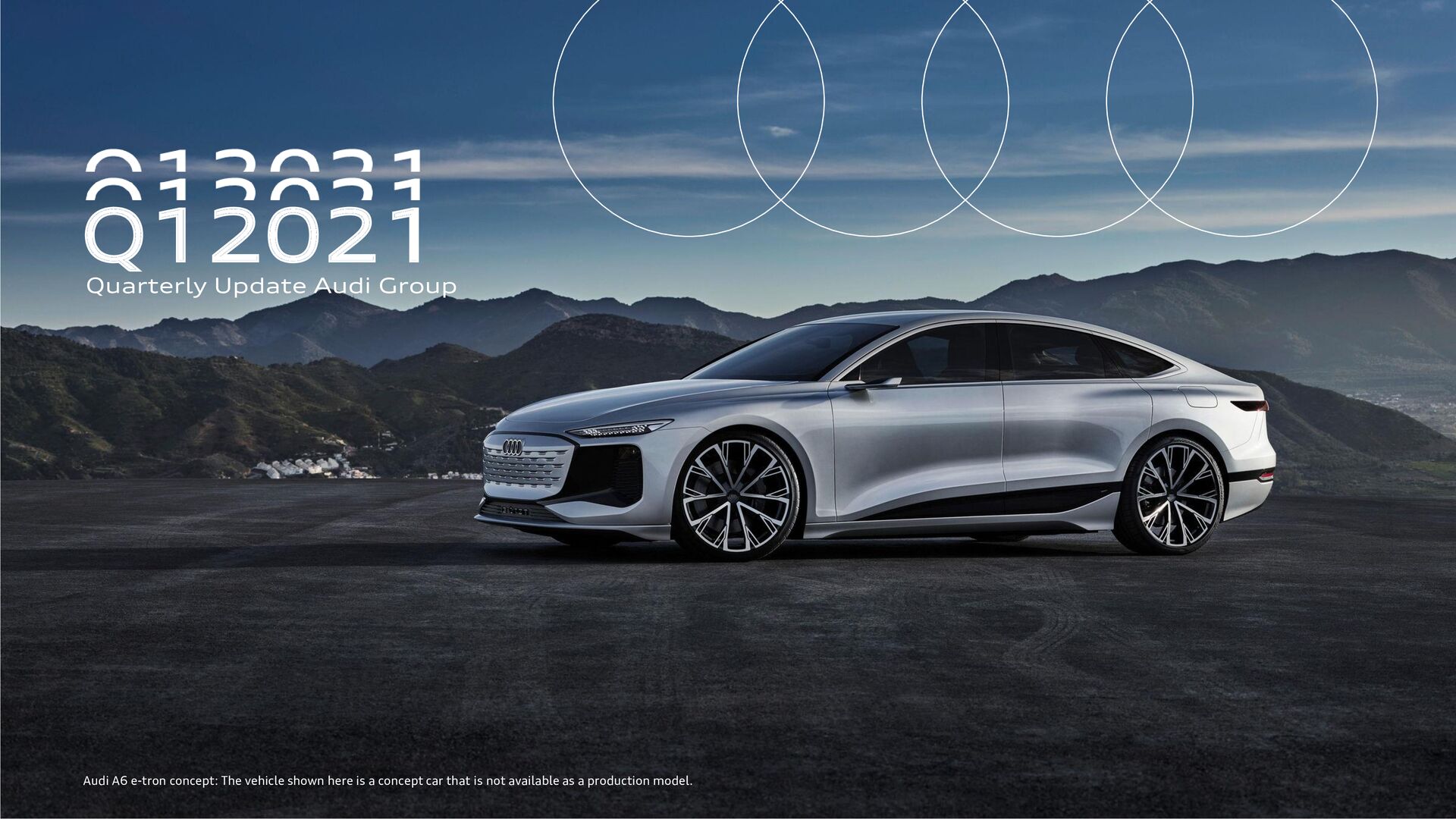 Quarterly Update Audi Group
Quarterly Update Audi Group
Two powerful electric motors provide dynamic driving performance and confident all-wheel drive. The high-voltage battery with a net energy content of 84 kWh enables ranges of up to 488 kilometers (WLTP, for the Audi e-tron GT quattro2) and can be recharged extremely quickly thanks to its 800-volt technology. Suspension, lights, controls, connectivity or e-tron sport sound: The Audi e-tron GT quattro2 and the RS e-tron GT1 demonstrate accumulated technical expertise and the Audi brand’s passion for details. Beginning of a new era: the Audi RS e-tron GT1 and Audi e-tron GT quattro2 1 Audi RS e-tron GT: combined electric power consumption in kWh/100 km: 20.2–19.3 (NEDC); combined CO2 emissions in g/km: 0 (NEDC) Information on fuel/electric power consumption and CO2 emissions in ranges depending on the chosen equipment level of the car. 2 Audi e-tron GT quattro: combined electric power consumption in kWh/100 km: 19.6–18.8 (NEDC); combined CO2 emissions in g/km: 0 (NEDC) Information on fuel/electric power consumption and CO2 emissions in ranges depending on the chosen equipment level of the car. INTERNAL Electric, efficient & emotional: Audi Q4 e-tron & Audi Q4 Sportback e-tron The Audi Q4 e-tron and the Q4 Sportback e-tron are the first compact fully electric SUVs from the brand with the Four Rings. Both of them impress with a new spacious dimension in the interior and pioneering solutions when it comes to operation, display and assist systems. The optional augmented reality head-up display connects the virtual and the real worlds in a totally new way. The Audi Q4 e-tron achieves a maximum range of up to 520 kilometers in the WLTP cycle. It goes on sale in Europe in June 2021. Audi Q4 Sportback e-tronAudi Q4 e-tron INTERNAL New Board members, responsibility for Bentley and NEV company in China The brand with the Four Rings is deepening its partnership with First Automotive Works (FAW) and laying the foundation for continued success in China.
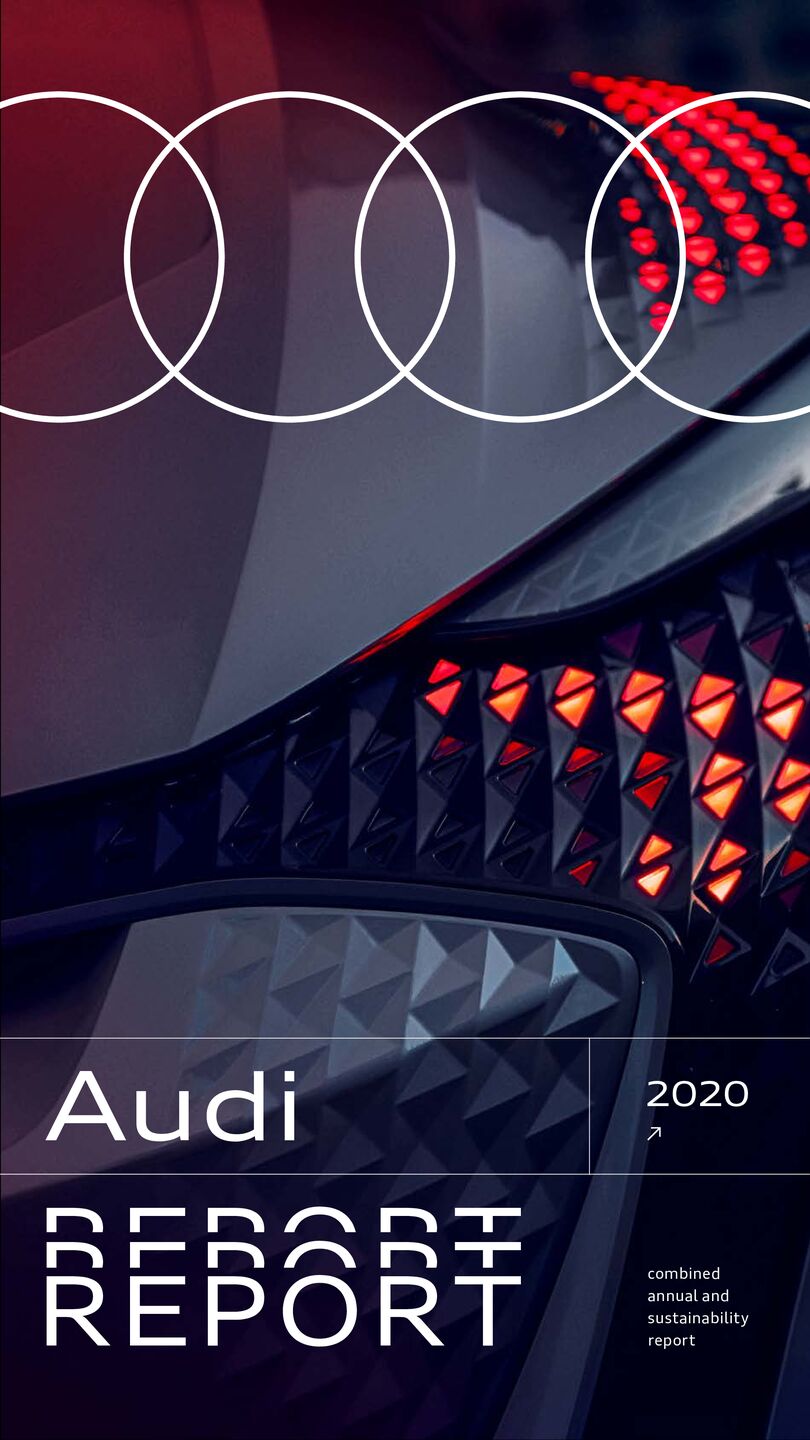 Audi Report 2020
Audi Report 2020
An overview of key milestones in 2020: 2020 was an extraordinary year Audi Report 2020 12 Milestones Jan Feb Mar Apr May Jun Jul Aug Sep Oct Nov Dec Mobility goes smart and individual: Audi at the 2020 CES Audi demonstrates the path to a digital future at the Consumer Electronics Show (CES) 2020. The exhibits range from production-ready technologies to futuristic visionary vehicles. With the Audi Intelligence Experience project, Audi is providing an outlook on how its customers will be able to experience and interact with the automobile in the future. One of the technology project’s applications, self-learning navigation, is already being integrated into the MMI systems of current Audi models. P h o to : A U D I A G Audi provides a glimpse into future mobility at the Consumer Electronics Show (CES) 2020. Audi Report 2020 13 Milestones Audi e-tron Charging Service: more convenient charging for Audi customers Audi is making charging even more convenient and increasing price transparency. The Audi e-tron Charging Service has been operating for a year. In February, it already provides access to a public charging infrastructure for electric vehicles in 24 European countries.1 Customers can currently use more than 135,000 charging points1 from over 400 different international providers with just one card. In the future, they will be able to charge vehicles at the high-power charging terminals of the IONITY network at new rates using the City or Transit tariff. Here, e-tron customers benefit from heavily discounted Transit rates of 31 euro cents per kilowatt hour used. At the same time, the energy comes from renewable sources, which is a key component of sustainable mobility. For more details about the Audi e-tron Charging Service and rates click here.
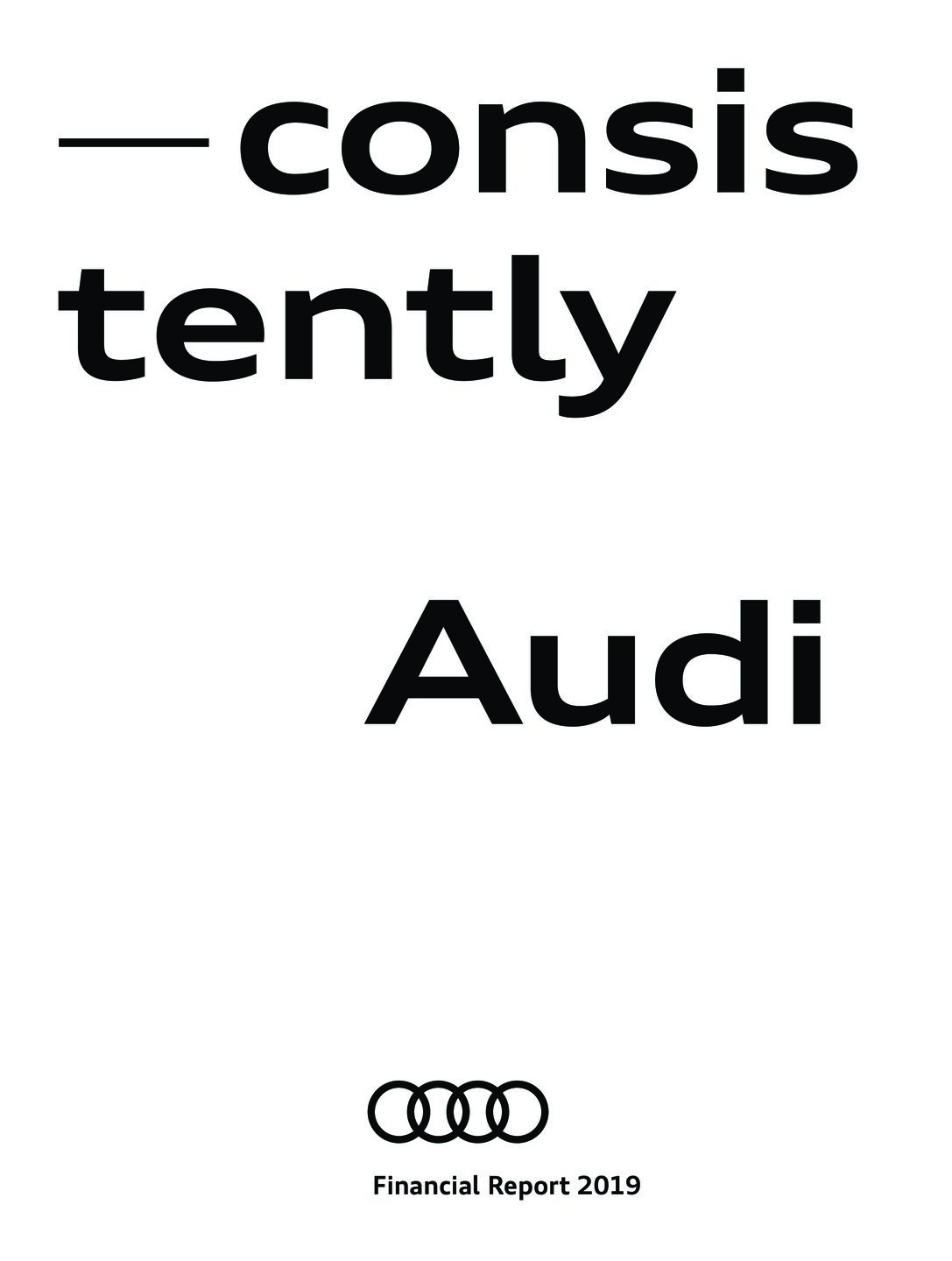 Financial Report 2019
Financial Report 2019
An electric vehicle is only as clean as the power used to build and charge it. In the production phase, the manufacturing of the cells in particular is a very energy-intensive affair. Audi therefore requires its battery cell suppliers to use green electricity for cell manufacturing. Equally, charging an electric vehicle with power that has not been generated carbon-neutrally will negatively impact its overall environmental footprint. For that reason, we are working on offering a green electricity supply for our customers. This is another building block that will help us to cut the life-cycle emissions of electric vehicles and promote emission-free mobility as part of an environmentally friendly ecosystem. Looking ahead, we see potential in fuel cell technology (FCEV) as a complementary solution to our battery electric vehicles. With that in mind, we have set up fuel cell research and development activities at the competence center in Neckarsulm. // SUSTAINABLE COMBUSTION ENGINES Until production of combustion engines comes to an end, we believe it is important to continue development work on these drive concepts in parallel with developing electric vehicles, to create a comprehensive range for sustainable mobility. One solution, for instance, involves gradually equipping our models with mild-hybrid technology based on a 48-volt primary electrical system. The 48-volt primary electrical system opens up new potential for cutting fuel consumption. Alongside innovative and sustainable drive technologies, there is scope for carbon-neutral synthetic fuels to improve our vehicles’ carbon footprint. These include Audi e-gas, for example. Our long-term goal as a company is net-zero carbon emissions by 2050. To achieve that, as well as working on our products and the entire value chain, we are supporting innovations and technologies that make it possible to capture atmospheric CO2.